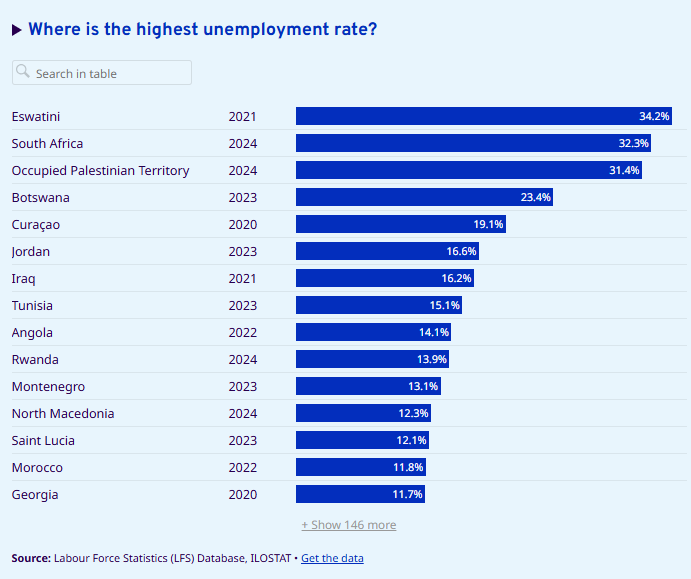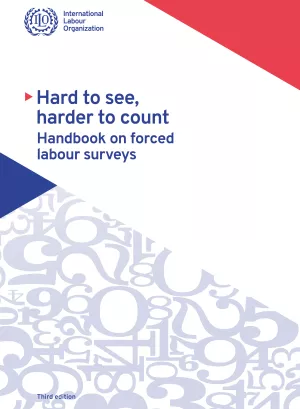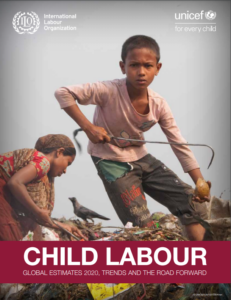Topic
Statistics on unemployment and labour underutilization
Table of Contents
Related pages
See also
Introduction
The unemployment rate is probably the best-known labour market measure and is certainly one of the most widely quoted by the media. The unemployment rate is a useful measure of the underutilization of the labour supply. It reflects the inability of an economy to generate employment for those persons who want to work but are not doing so, even though they are available for employment and actively seeking work.
Other measures of labour underutilization recognized in the international statistical standards are time-related underemployment and the potential labour force.

Data catalogue
| Indicator | Frequency | Database | Subject | Download (with labels) | Download (with codes) | Data explorer |
|---|---|---|---|---|---|---|
| SDG indicator 1.1.1 - Working poverty rate (percentage of employed living below US$2.15 PPP) (%) | Annual | SDG Labour Market Indicators (ILOSDG) | Working poverty | .csv .dta .xlsx | .csv.gz | View |
Methods

Child Labour Statistics (CHILD database)
Concise description of concepts and definitions, uses, sources and limitations for the Child Labour Statistics (CHILD) database.

Hard to see, harder to count: Handbook on forced labour surveys
This revised version of the “Hard to see, harder to count” handbook provides an updated set of tools for the design, implementation and analysis of quantitative surveys on the forced labour of adults.
Analytical publications
Note: Many publications are available only in English. If available in other languages, a new page will open displaying these options.

Child Labour: Global estimates 2020, trends and the road forward
Published for the first time jointly by the ILO and UNICEF, as co-custodians of Target 8.7 of the Sustainable Development Goals, the report takes stock of where we stand in the global effort to end child labour.
